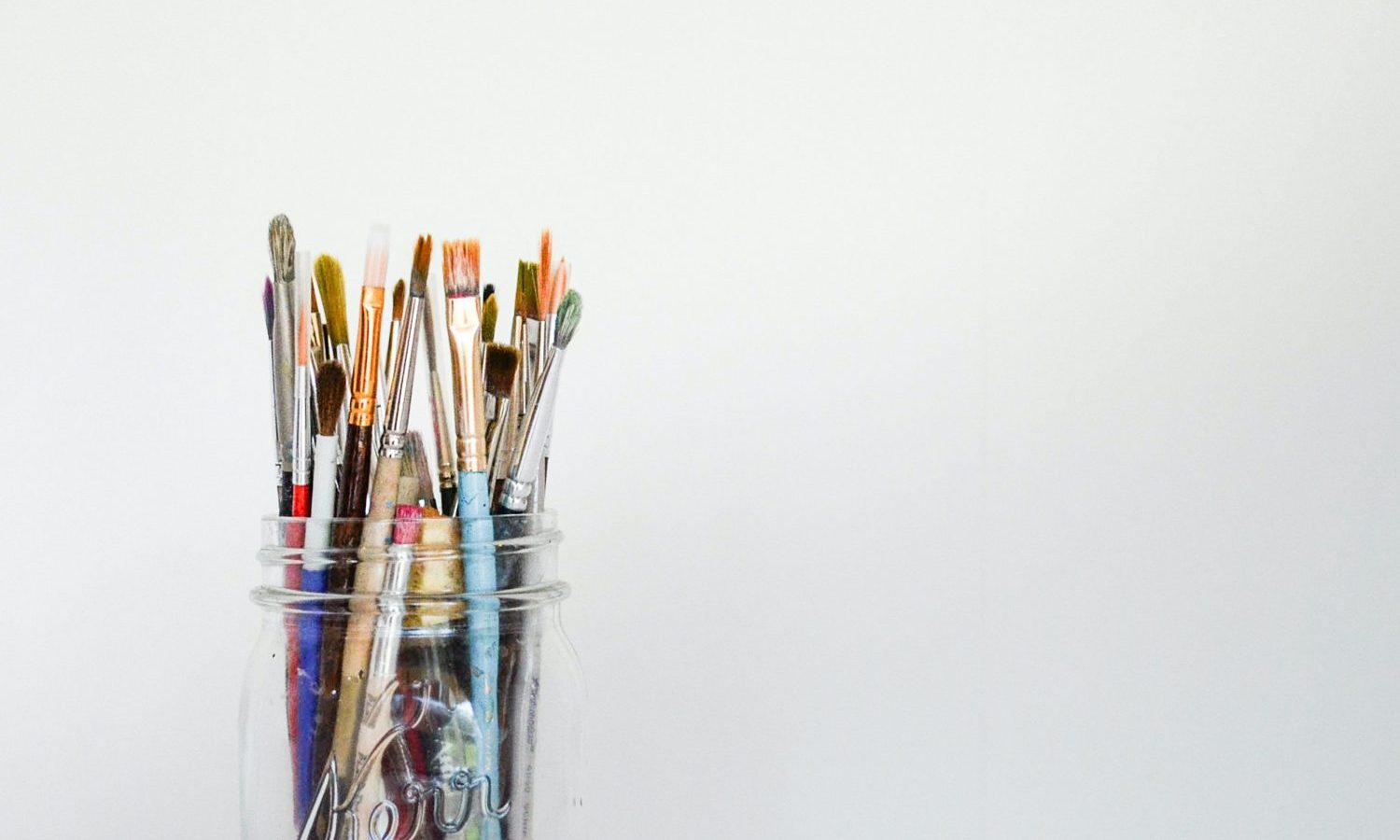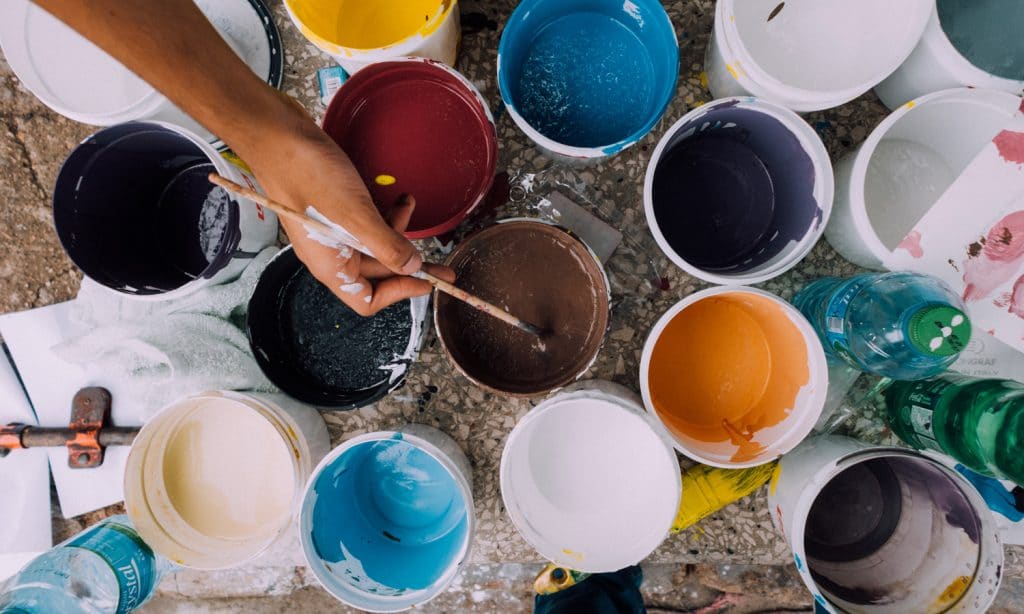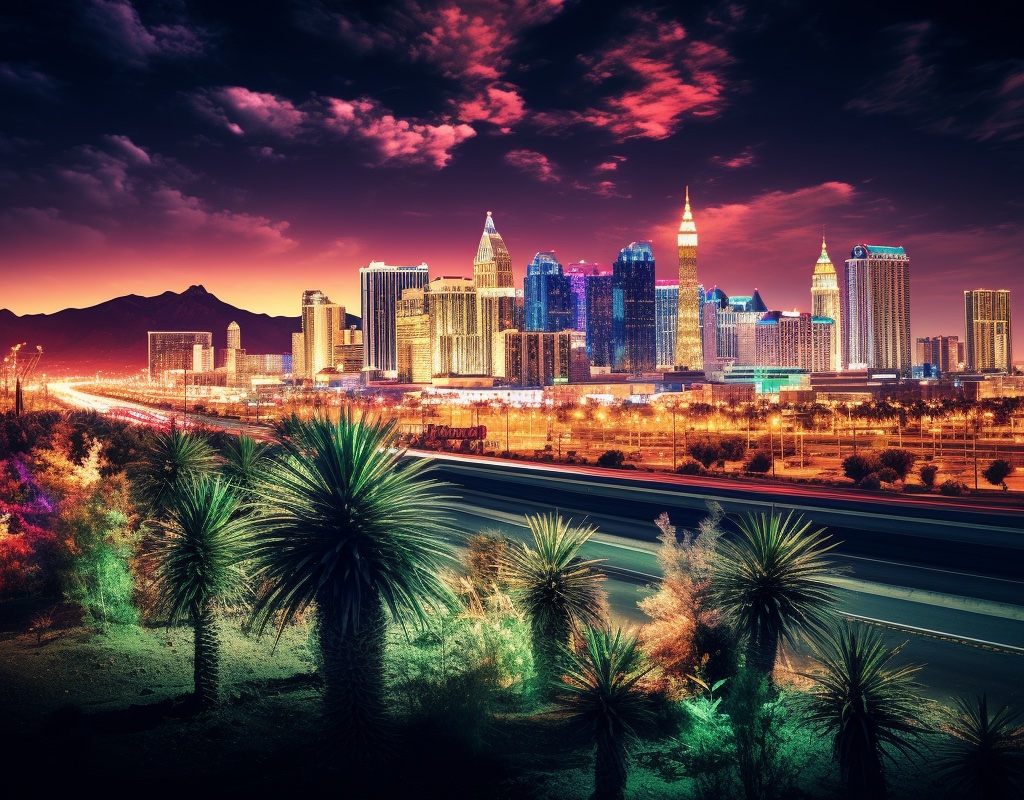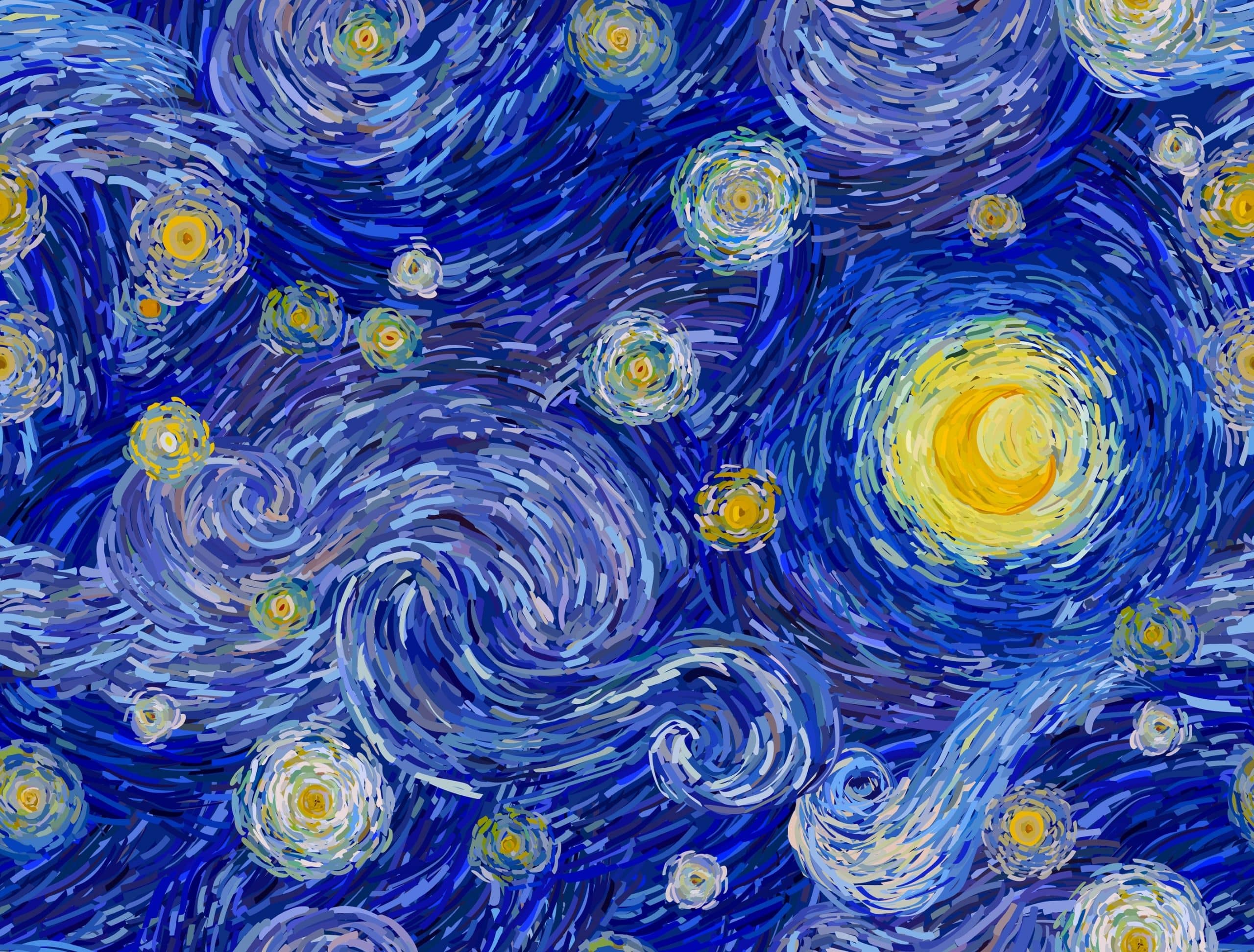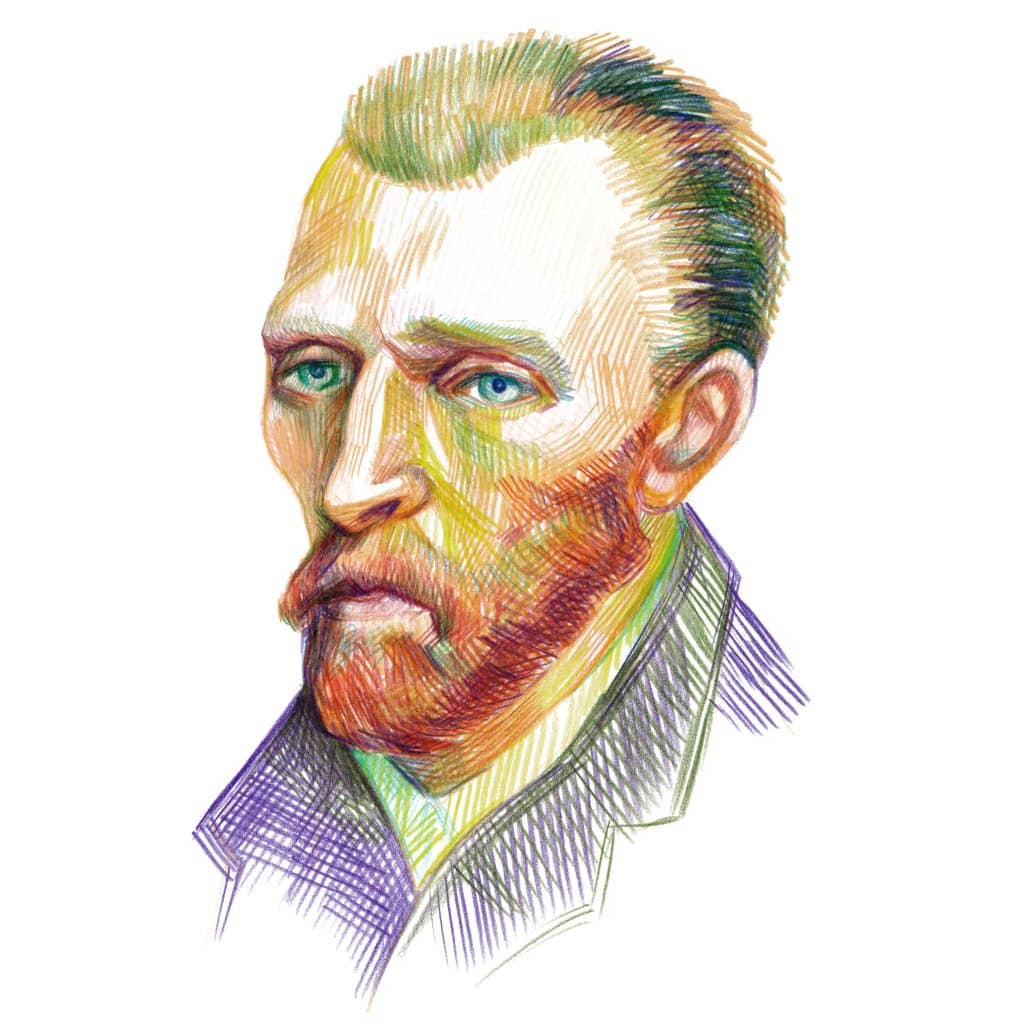In a few months, the self-proclaimed entertainment capital of the world will make the case for itself as the weed capital of the world. Las Vegas’ seven-old legal cannabis program is a fine-tuned machine, but there’s one final shot in the arm coming this spring: nice places to smoke it.
Sin City is home to 70 dispensaries—all within a 15-mile radius of the Strip—that accommodate the 45 million annual visitors looking to buy legal cannabis, as well as 3 million locals in the metro area. Clever entrepreneurs have additionally built a bustling industry around legal cannabis with everything from ganja-inspired tour buses to 420-friendly yoga classes.
Read on to learn how to make your Vegas trip spectacular, with the best of what the city has to offer weed tourists in 2024:
What are Las Vegas’ cannabis laws?
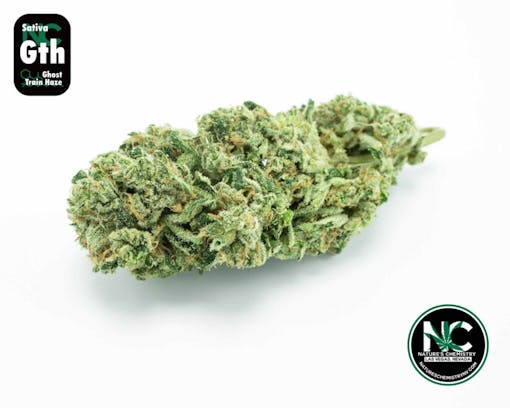
Weed is legal for all adults 21 and older, but for now, you still can’t legally consume it outside of a private residence. That being said, Las Vegas Police have bigger fish to fry than busting people smoking weed in public or carrying more of it than the legal limit. You won’t get arrested unless you’re toting an exorbitant quantity (think 1 pound or more). The worst that usually happens, if officers notice at all, is that you’ll be told to put out your blunt and perhaps throw it away.
New in 2024: Nevada’s possession limit has doubled. Adults can buy up to two ounces of flower or a quarter-ounce of concentrates per day from a legal dispensary.
“It’s a special time for cannabis tourism in Las Vegas,” said Tick Segerblom, a county commissioner best known as Nevada’s Godfather of Cannabis for his role in advancing legal weed a few years back as a state senator.
Get the full details of the law on Leafly’s Learn Legalization page for Nevada. Also be sure to check out official government sources.
Where are Las Vegas’ legal weed stores?
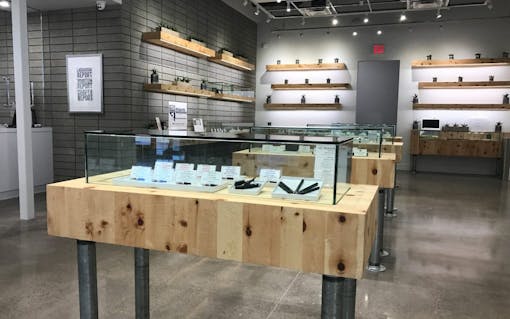
Back in 2017, in the early days of rec cannabis in Nevada, Sin City’s licensed cannabis stores were popping up like bags of Orville Redenbacher. But after a roller-coaster period of changes in ownership and a few closures, many stores have remained operational for several years and counting. Our latest tally lists 70 operational dispensaries in the Las Vegas Valley, which includes the neighboring cities of North Las Vegas, Henderson and a swath of land in unincorporated Clark County.
Shop highly rated dispensaries near you
Showing you dispensaries near
Check out Leafly Finder for a map of licensed cannabis stores in Las Vegas proper.
What’s the closest legal weed store to the Las Vegas airport?
Related
How to order weed delivery online with Leafly
The Grove—located at 4647 South University Center—has long been the first stop for 420 travelers when they get off the plane in Vegas. Located less than a mile from Harry Reid International Airport, it’s open 24 hours and was one of the city’s original batch of dispensaries back in 2015.
If you’re looking for more options, check out the nearby MedMen at 4503 Paradise Road and Pisos, a little ways north, at 4110 South Maryland Parkway. All three stores offer online ordering for same-day pickup and usually have minimal, if any, wait time for walk-in customers.
For stores that have not advertised with Leafly, Nevada’s Cannabis Compliance Board keeps a list of licensed retailers.
What’s the best weed to buy in Las Vegas?
Oh, there’s a ton of good stuff. Leafly has started offering professional ratings of cannabis in Las Vegas, and here are some of our top pics:
Budtenders at some of Vegas’ most popular dispensaries — Planet 13, NuWu, Reef and Thrive — tell Leafly they recommend Blue Dream, Gorilla Glue #4, Ghost Train Haze, and Jenny Kush.
The most popular brands include Green Life Productions and Medizin. We also like The Grower Circle and Polaris.
The top 10 strains of Nevada in 2024—based on strain detail page sessions per month at Leafly—are:
In addition to flower, we enjoy Vert Unlimited candies and Vegas Valley Growers’ vapes.
Related
Leafly Ratings 2023: 45 top-shelf and value buy flowers rated from 8 US states
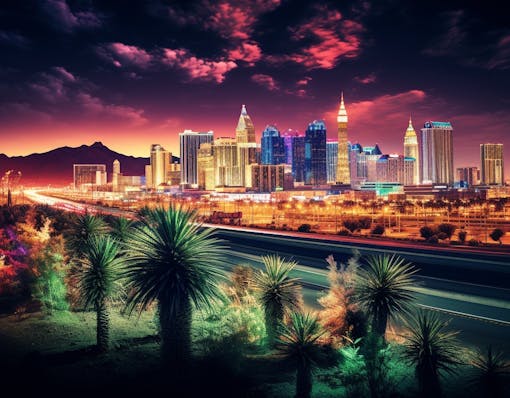
What can I do when I’m high in Las Vegas?
The possibilities are endless! Here are our best bets:
For an action-packed sensory-serving experience, check out:
For a chill yet fun and social time in Las Vegas, try:
For some awesome Vegas munchies, go to:
Las Vegas weed visitors’ frequently asked questions:
Do Vegas dispensaries keep my personal information when they scan my ID?
They say they don’t. And by state law, they’re not supposed to. The goal behind scanning your ID is simply to have your information on file while you shop and to identify you when you check out. Most stores wipe your ID from their system within 24 hours, if not sooner.
Are Vegas weed stores still cash-only, or can I use a credit card? How about ApplePay, Venmo, PayPal and cryptocurrency?
Cash is king.
Most Las Vegas dispensaries accept debit cards, but it requires some banking judo and fees, though. Pot shops don’t take credit cards or Apple Pay, PayPal, Venmo, crypto, or any of that.
Is plastic worth the convenience? Perhaps, if you don’t mind spending a few extra bucks. But honestly, just go with cash if you can.
When will the weed lounges be up and running?
Stay tuned to Leafly for the answer. Download the Leafly app and turn on notifications and we’ll ping you.
At least three state-licensed lounges are scheduled to finally open in Las Vegas on 4/20 this year: The Reserve at Nevada Wellness Center, Dazed at Planet 13, and Smoke & Mirrors at Thrive.
We’ve been waiting for this day in Las Vegas since 2017. The Nevada state legislature offered some hope by passing a bill to green-light lounges all the way back in 2021. Three years later, and there’s still only one lounge: The SkyHigh Lounge on tribal land just north of downtown Las Vegas exists thanks to a special pact between Nevada tribes and the governor’s office.
Can I trust the weed at Las Vegas stores?
Sure. In recent years, Nevada issued several cannabis recalls due to faulty testing and inflated THC counts from the state’s testing labs; a sign of the system working. The state’s Cannabis Compliance Board has cracked down since 2022. Buy with confidence, the weed will be great.
Looking beyond Las Vegas?
Here’s a map to some of Leafly’s other top dispensary picks across Nevada.
Any more questions?
Drop us a comment to let us know what else you want to see in our Las Vegas visitors guide and we’ll get on it!



